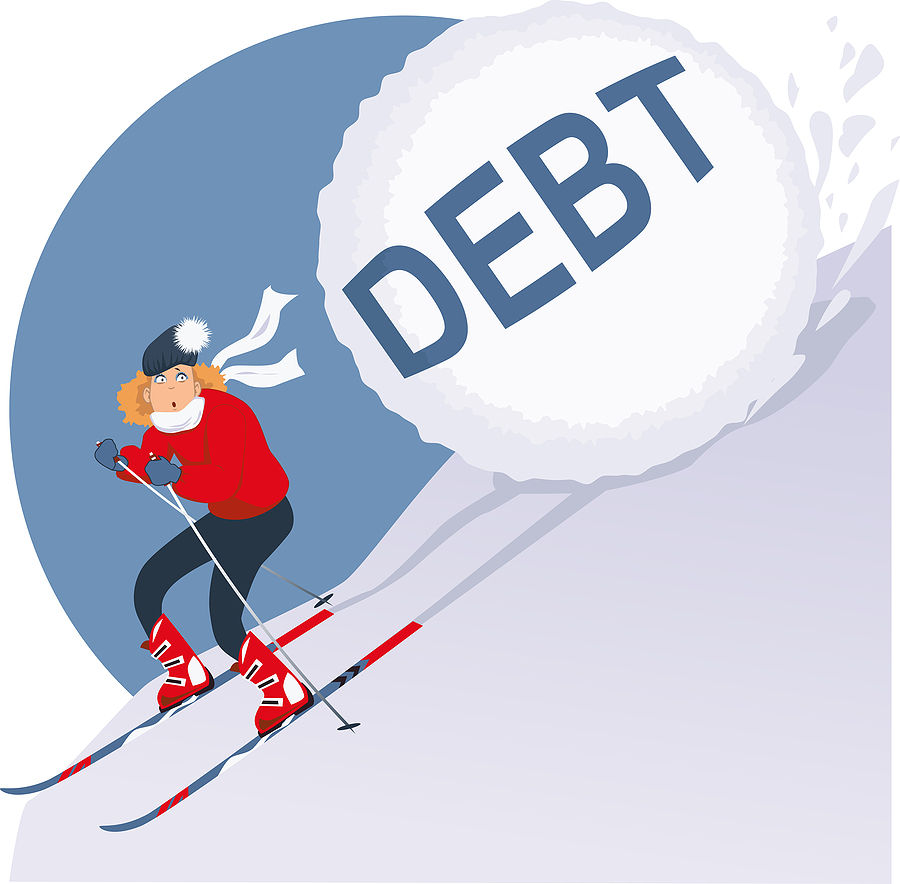What is the best way to pay off debt? Debt Avalanche vs. Debt Snowball

When you set your mind on a goal, you want to achieve it in the best way possible. But what does “best” mean, exactly? Sometimes it depends on the person.
For example, let’s say you’re training for a marathon. Naturally, your goal is to finish the race — and it’s an impressive feat to run 26.2 miles! For others, the goal is to make a certain time, break a personal record or finish in first place.
Paying off debt works the same way. The goal of being debt free is a great objective for anyone, but there’s more than one way to do it. For people who struggle with motivation, the snowball method is usually best. For people who want to save money in interest charges, the avalanche method is the way to go.
The Debt Snowball vs. The Debt Avalanche
If you haven’t heard of the debt snowball or the debt avalanche methods before, let us explain.
These are two different strategies for paying off credit cards and some other types of debt. Both are considered do-it-yourself (DIY) methods, because you can follow them on your own, without any outside help. Here’s how they work.
How the Debt Avalanche Works
The debt avalanche is a strategy in which you prioritize paying off debt based on the Annual Percentage Rate (APR) — starting from highest rate to lowest. This can also be referred to as the“stacking method” or the “debt ladder.”
To be clear, when using this method, you still make the minimum monthly payments on all of your debts, but you put your extra money toward the debt with the highest APR (a number that represents your interest rate and fees).
Once the first debt is paid off, you continue this method by paying off the account with the next highest interest rate. Follow this pattern until you’re debt free.
If that sounds simple, it is. It’s not a magic formula for erasing debt, but it does help you focus on a goal and save money while becoming debt free. Just make sure you avoid taking on new debt while using this method, or it will take you longer to reach your goal.
How the Debt Snowball Works
The debt snowball method is a payment strategy in which you pay off debts in order of the balances you owe — from smallest to largest.
Just like a snowball starts small and gets bigger as it rolls, you start with the smallest debt and work your way up. Of course, you continue to make your debt payments, but you pay just the minimum monthly payments on most accounts and put all your extra cash toward the account with the smallest balance. Repeat this process until all debts are paid.
As you pay off accounts, you eliminate monthly payments, freeing up even more money to put toward your next smallest debt. In other words, this method is all about momentum and seeing progress as quickly as possible.
To recap, here’s how the two methods compare:
| Debt Avalanche | Debt Snowball | |
|---|---|---|
| Priority | Highest APR | Lowest balance |
| Benefits |
|
|
| Drawback | Less motivating | More expensive |
Choosing the Best Method for You
If you’re making a plan to pay off debt and you need to choose which method to use, consider these details first.
Your financial personality
Think about how each repayment option aligns with your financial personality, meaning your attitudes, habits, strengths and challenges when it comes to money.
If you’re someone who’s motivated by efficiency and embraces savings over spontaneity, then the debt avalanche method may be the perfect fit. You’re more likely to stay committed to the plan, even if it takes longer to pay off individual accounts.
On the other hand, if you like to see quick results and you struggle with reaching financial goals, the debt snowball is ideal. You won’t mind the fact that repayment is slightly more expensive, because it’s worth the joy of seeing account balances hit $0 as quickly as possible.
The amounts you owe
Before you make a plan, be sure to take an inventory of your debt. Write down how much you owe one each account, along with the interest rate.
Do you owe similar amounts on each account? If so, choose the debt avalanche, since it could actually help you pay off accounts sooner and save you money. If you have a wide range of balances, the snowball can still make sense.
Student loan debt
Each type of debt has different repayment options, and those options can impact your payment strategy. For example, federal student loans give you far more repayment options than private student loans.
For federal loans, the Department of Education (ED) offers Income-Driven Repayment (IDR) plans with payments as low as $0 a month. Plus, the ED has debt forgiveness programs and can pause your payments if you’re facing a financial hardship.
By contrast, private student loan lenders are not required to offer any help to students. In other words, it’s worth checking to see what you qualify for before sending extra money to your federal student loan servicer.
Low APR
Once you eliminate your high-APR debt — meaning debt with rates of 8% or higher — you’ll want to change your approach. Lower interest debt usually includes accounts that are “secured” by collateral, such as mortgages and home equity loans. You can often get a better payoff by making the minimum payments on these accounts, and putting your extra cash into a low-risk investment such as a retirement account (especially one with an employer match) or a mutual fund.
Eliminate debt for good
As you can see, the “best” way to pay off debt depends on your situation. The most important thing is to stay committed to eliminating debt with whichever plan you choose, whether it’s the debt avalanche or the debt snowball method.
Part of that commitment means avoiding new debt. If you can’t seem to stop using credit cards or borrowing money, try reaching out to a certified credit counselor for free advice on how to adjust your budget, talk to creditors, manage debt issues and more.
Frequently Asked Questions (FAQs)
What is an advantage to using the debt avalanche method?
The main advantage of paying off debt with the debt avalanche method is saving money. With this method, you pay off high-interest accounts first, so you avoid the interest charges you would accrue from paying the accounts off slowly.
What is an example of a debt avalanche?
With the debt avalanche method, you pay off the debt with the highest APR first. So if you had an extra $100 to put toward debt payments for the month, and you had a loan with 10% APR and a credit card with 20% APR, you’d pay the extra $100 toward the credit card.
Which method is best for staying motivated during debt repayment?
The debt snowball method is proven to be more motivating for debt repayment than the avalanche method, since you focus on paying off the account with the smallest balance first. By doing so, you ensure you’ll see one of your accounts hit a $0 balance sooner.



